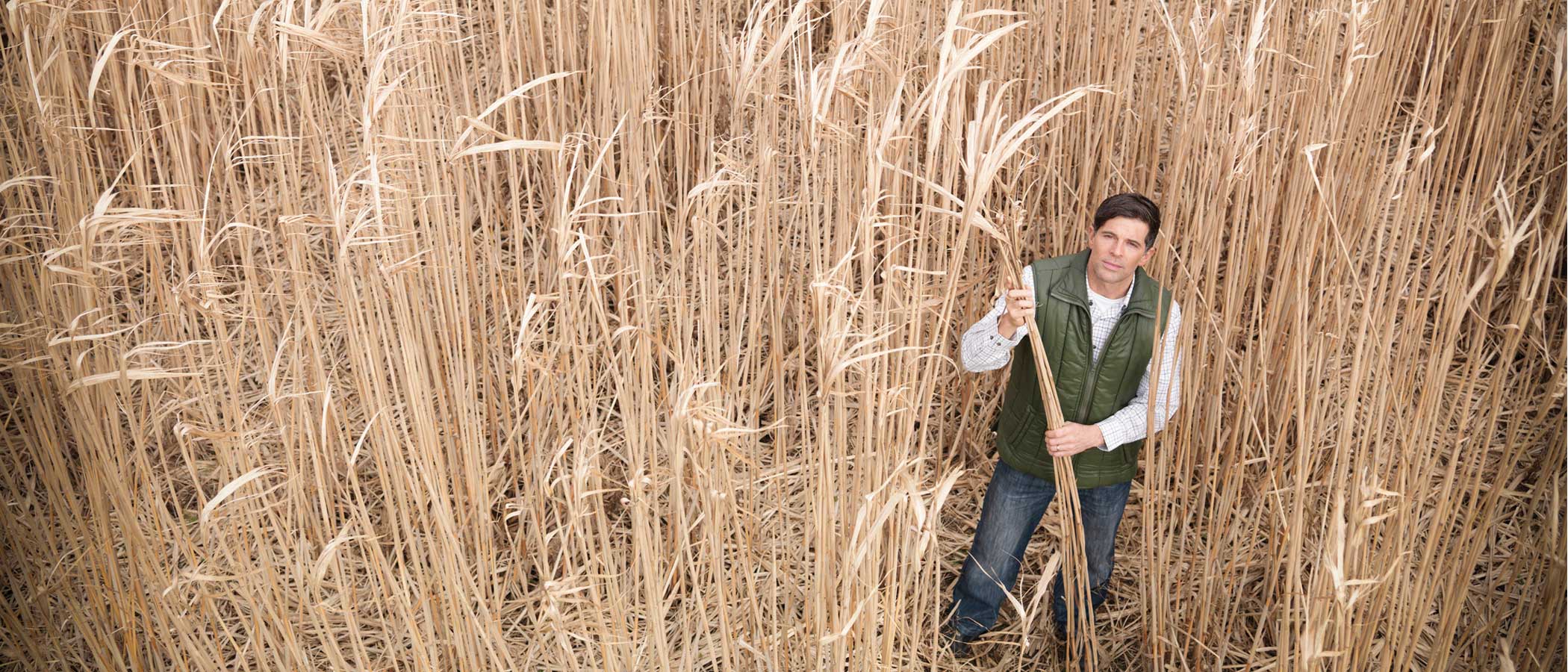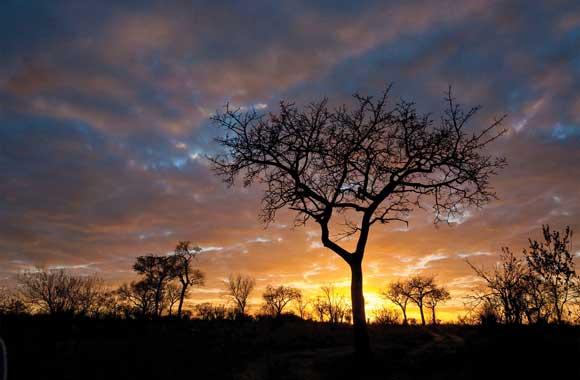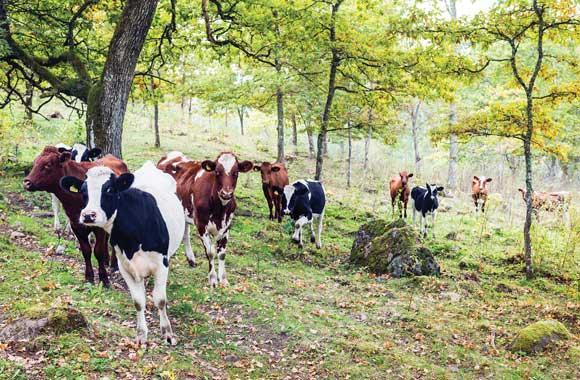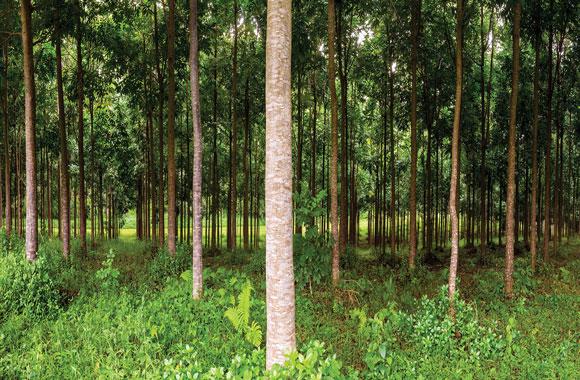Perennial Biomass Production
Bioenergy relies on biomass—often annual crops such as corn. Perennial plants (e.g., switchgrass, silvergrass, willow, eucalyptus) are a more sustainable source and sequester modest amounts of soil carbon.
Reduced/Sequestered
2020–2050
To Implement
Operational Savings
Impact
Perennial biomass production provides the feedstock for biomass power production, making possible the emissions savings that solution offers. It also could reduce emissions by some 4.00–7.04 gigatons of carbon dioxide equivalent by 2050 by replacing annual feedstocks with perennials and so sequestering more soil carbon. Our analysis assumes an increase from 0.27 million hectares currently to 106.92–189.95 million hectares by 2050. The net first cost to implement is US$195.02–338.28 billion and the lifetime operational cost is US$1.84–3.19 trillion, but profits over the lifetime could be US$1.13–1.95 trillion.
Introduction
Project Drawdown’s Perennial Biomass Production solution involves the use of perennial grasses and coppiced woody plants for bioenergy feedstock, instead of annual crops such as corn. This solution replaces grazing or annual cropping.
Because energy inputs for annual bioenergy crops, such as corn, are so high, such crops make little progress on cutting emissions.Some perennial crops—such as switchgrass, fountain grasses, silver grass, poplar, willow, eucalyptus, and locust—have better potential. Perennial grasses and resprouting woody plants have naturally high productivity, need fewer inputs than annuals, and are not food crops; hence, many governments are promoting them as future energy farming systems. They have the advantage of sequestering modest amounts of soil carbon while producing bioenergy (energy impacts are accounted for in the Biomass Power solution). Though not considered as such for the purposes of this model, they are also an ideal feedstock for clean cookstoves and for making paper, cardboard, insulation, bioplastics, and other products.
This analysis focuses on two types of perennial energy crops: herbaceous crops (mostly giant grasses) and short-rotation coppice, in which the above-ground biomass of resprouting woody crops is harvested every two to three years.
Methodology
Total Land Area
To evaluate the extent to a Food, Agriculture, and Land Use sector solution can reduce greenhouse gas emissions and sequester carbon, we need to identify the total land area available for that solution. To avoid double counting, we use an integration model that allocates land area among all of the sector’s solutions. This involves two steps. First, we classify the global land area into agro-ecological zones (AEZs) based on the land cover, soil quality, and slope and assign AEZs to different thermal moisture regimes. We then classify the AEZs into “degraded” and “nondegraded.” Second, we allocate the solutions to AEZs, with the solution most suited to a given AEZ or sets of AEZs assigned first, followed by the second-most-suited solution, and so on. Because it’s hard to predict future changes, we assume the total land area remains constant. Total land areas represent both the implementation and functional unit.
The total land suitable for perennial biomass production is 265 million hectares, representing degraded grassland areas. This is lower than many estimates, because we prioritize food and reforestation over bioenergy. We estimate current adoption (the amount of functional demand supplied by the solution in 2018) at 0.3 million hectares, based on 13 data points from seven sources.
Adoption Scenarios
We developed five custom scenarios based on low, medium, and high adoption rates using 15 data points from seven sources.
We calculated impacts of increased adoption of perennial biomass production from 2020 to 2050 by comparing two scenarios with a reference scenario in which the market share was fixed at current levels.
- Scenario 1: 106.92 million hectares are adopted (40 percent of total available land area).
- Scenario 2: 189.95 million hectares are adopted (72 percent of total available land area).
Sequestration Model
We estimated that perennial biomass sequesters 1.1 metric tons of carbon per hectare per year, based on 19 data points from nine sources. We assumed that all sequestered carbon that is not harvested for energy production is re-emitted at the end of the crop’s productive life, when fields are plowed up and replanted. We assumed perennial bioenergy crops have a productive lifespan of 20 years, based on meta-analysis of seven data points (reporting averages) from five sources.
Financial Model
All monetary values are presented in 2014 US$.
First cost was US$1,294.34 per hectare, based on meta-analysis of nine data points from six sources. We assumed that first costs for the land use that perennial bioenergy crops are replacing had already been paid because the land is already in production. We calculated net profit per hectare at US$363 per year for the solution (based on meta-analysis of 13 data points from six sources), compared with US$154.12 per year for the conventional practice (based on 20 data points from 15 sources).
We calculated annual operational cost at US$599.51 per hectare for the solution (based on meta-analysis of 11 data points from six sources), compared with US$328.42 for the conventional practice (based on nine data points from seven sources).
Integration
Drawdown’s Agro-Ecological Zone model allocates current and projected adoption of solutions to the planet’s forest, grassland, rainfed cropland, and irrigated cropland areas. Despite very broad climatic suitability, we gave perennial bioenergy crops low priority so as to reduce impacts on food production.
We relegated the Perennial Biomass Production solution to degraded grasslands, where it was the third (and lowest) priority because we rate food production and ecological restoration as higher priorities than energy production.
Results
Scenario 1 reduces carbon dioxide equivalent emissions by 4.00 gigatons by 2050. Net first cost to implement is US$195.02 billion, and lifetime net operational cost is US$1.84 trillion. Lifetime savings are US$1.13 trillion.
Scenario 2 reduces emissions by 7.04 gigatons of carbon dioxide-equivalent by 2050. The net first cost to implement is US$338.28 billion, and the lifetime operational cost is US$3.19 trillion. Lifetime savings are US$1.95 trillion.
Discussion
This solution is somewhat challenging to benchmark, because few projections are available. Many factors limit this study, as the industry is in its infancy. Current adoption, projected future adoption, and financials would all benefit from additional data points.
Perennial Biomass Production may never be as central a solution as afforestation or multistrata agroforestry. Nonetheless, it offers a productive and carbon-sequestering use of degraded lands, farm borders, riparian edges, and other spaces. As wind, solar, and other energy sources come to meet civilization's energy needs, use of perennial biomass production may shift to clean cookstoves and feedstock for paper, bioplastic, and other bio-based products.
What You Can Do
When deciding whether to buy biofuels, consider the pros and cons for the climate and environment more broadly.
Encourage your elected officials to support legislation that enhances the capacity of farmers to contribute to solving climate change.
- Expand your knowledge by exploring another Drawdown solution.











